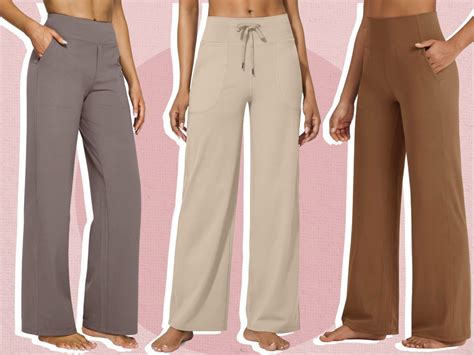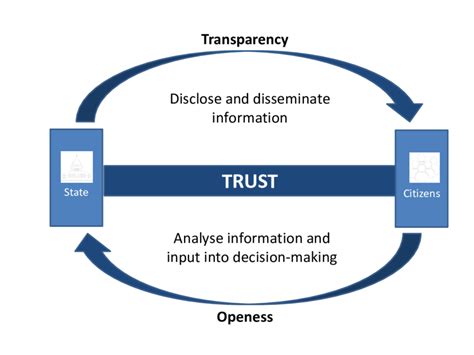
Many consumers are re-evaluating their spending habits and foregoing previously common purchases, driven by factors such as changing priorities, increased awareness of environmental impact, and the accessibility of alternative solutions. A recent online discussion highlighted 28 specific products and services that people are increasingly abandoning, reflecting a shift in consumer preferences and a growing emphasis on value and sustainability.
A wave of consumers are ditching traditional products for eco-friendly or cost-effective alternatives. Sparked by online discussions, consumers are identifying items they no longer deem essential, revealing a shift in priorities amid rising costs and increased environmental consciousness. This trend encompasses a wide range of goods, from everyday household items to subscription services, reflecting a broader re-evaluation of consumer habits.
The conversation, ignited online, prompted individuals to share items they’ve stopped buying. The reasons behind these choices range from financial considerations to a desire for minimalism and a reduced environmental footprint. The list underscores a growing awareness of unnecessary spending and a willingness to explore alternatives that align with evolving values.
Household Consumables Under Scrutiny
Several household consumables have seen a decline in popularity. Among the most frequently mentioned items are paper towels. As one participant noted, “Paper towels. Microfiber cloths and a quick wash work better anyway.” This sentiment reflects a move towards reusable options that reduce waste and offer long-term cost savings. People are not only seeing paper towels as environmentally irresponsible but also financially draining, considering how frequently they need to be replaced.
Another casualty in the shift away from excessive consumption is dryer sheets. Many consumers have found effective alternatives, such as wool dryer balls, which are reusable and reduce static cling without the chemical fragrances found in dryer sheets. The environmental and health concerns linked to the chemicals used in dryer sheets are pushing consumers toward safer and more sustainable choices.
Furthermore, air fresheners, particularly aerosol sprays, are facing increased scrutiny. Concerns about indoor air quality and the potential health effects of synthetic fragrances have led many to opt for natural alternatives like essential oil diffusers or simply improving ventilation. The move away from chemical-laden air fresheners is part of a broader trend of prioritizing health and well-being in the home environment.
Cleaning products, in general, are being re-evaluated, with more people turning to multi-purpose cleaners or making their own solutions using ingredients like vinegar, baking soda, and lemon juice. The desire to reduce exposure to harsh chemicals and the appeal of DIY solutions that are both effective and economical are driving this trend. Many pre-packaged cleaning products contain ingredients that are harmful to the environment, prompting individuals to create eco-friendly alternatives.
Rethinking Food and Beverages
Consumer habits related to food and beverages are also undergoing significant changes. Bottled water, once a staple for many, is increasingly being replaced by reusable water bottles and filtered tap water. The environmental impact of plastic waste and the cost of constantly purchasing bottled water are key drivers of this shift. “I stopped buying bottled water years ago,” one person shared, “a good water filter is cheaper and reduces plastic waste.”
Pre-packaged snacks, often laden with sugar, salt, and preservatives, are falling out of favor as people prioritize healthier eating habits. Many are opting for whole foods, homemade snacks, or smaller portions of higher-quality treats. The awareness of the negative health effects of processed foods is a major factor in this change.
Soda and sugary drinks are also on the decline, with more consumers choosing water, unsweetened tea, or sparkling water as healthier alternatives. The link between sugary drinks and various health problems, such as obesity and diabetes, is well-documented, prompting individuals to make more informed choices. The tax on sugary drinks in some regions has also played a role in curbing their consumption.
Coffee shop purchases are also being reconsidered. The convenience of grabbing a coffee on the way to work is undeniable, but the cost can add up quickly. Many people are now brewing their own coffee at home, using reusable cups to reduce waste and save money. The rise of high-quality home brewing equipment has made it easier to enjoy café-quality coffee without leaving the house.
Entertainment and Subscription Services on the Chopping Block
The way people consume entertainment is also changing, with many re-evaluating their subscription services. Cable television is rapidly losing ground to streaming services, offering more flexibility and often lower costs. However, even streaming services are coming under scrutiny as consumers realize the cumulative cost of multiple subscriptions can be substantial. Many are opting to rotate subscriptions, canceling services after watching specific shows or movies.
Physical media, such as DVDs and Blu-rays, are becoming increasingly obsolete as streaming services provide instant access to a vast library of content. The convenience and accessibility of streaming have made physical media largely redundant for many consumers. However, some collectors still value physical media for its superior quality and the ability to own their favorite titles.
Magazine subscriptions are also declining as people turn to online news sources and blogs for information and entertainment. The immediacy and accessibility of online content have made print magazines less appealing to many readers. However, some niche magazines continue to thrive by offering high-quality content and a curated reading experience.
Gym memberships are another area where consumers are re-evaluating their spending. The cost of a gym membership can be significant, and many people find they don’t use it enough to justify the expense. Home workouts, online fitness classes, and outdoor activities are becoming increasingly popular alternatives. The COVID-19 pandemic accelerated this trend as gyms were forced to close, leading people to discover alternative ways to stay active.
Fashion and Personal Care: A More Mindful Approach
Fast fashion, characterized by cheap, trendy clothing that is quickly discarded, is facing increasing criticism. Consumers are becoming more aware of the environmental and social costs of fast fashion, including pollution, waste, and exploitative labor practices. Many are opting for more sustainable and ethical clothing brands, or buying second-hand clothing. The rise of online resale platforms has made it easier to find quality used clothing at affordable prices.
Makeup and skincare products are also being re-evaluated, with many people simplifying their routines and opting for multi-purpose products or natural alternatives. The trend towards minimalism and a desire to reduce exposure to potentially harmful chemicals are driving this shift. The “skinimalism” movement encourages people to embrace their natural skin and use fewer products.
Expensive haircuts and salon treatments are also being cut back on, with many people learning to cut their own hair or opting for simpler styles that require less maintenance. The cost of regular salon visits can be significant, and many people are finding ways to save money without sacrificing their appearance. Online tutorials and DIY kits have made it easier to perform basic grooming tasks at home.
Manicures and pedicures at salons are also being reconsidered as individuals seek ways to save money and reduce their exposure to chemicals. Doing nails at home has become more popular, with many people investing in their own nail polish and tools. The COVID-19 pandemic also contributed to this trend as salons were temporarily closed, forcing people to learn how to do their own nails.
Transportation and Travel: Shifting Gears
Car ownership is facing increasing scrutiny, particularly in urban areas where public transportation, ride-sharing services, and cycling are viable alternatives. The cost of car ownership, including insurance, maintenance, and fuel, can be substantial. Many people are finding that they can save money and reduce their environmental impact by relying on alternative modes of transportation. The rise of electric scooters and bike-sharing programs has also made it easier to get around without a car.
Air travel, once seen as a luxury, is now facing criticism for its environmental impact. Consumers are becoming more aware of the carbon emissions associated with flying and are opting for alternative modes of transportation, such as trains or buses, or choosing to travel less frequently. The “flight shame” movement encourages people to reduce their air travel for environmental reasons.
Vacation homes, often expensive to maintain and underutilized, are being reconsidered by some homeowners. The cost of property taxes, insurance, and upkeep can be significant, and many people find that they only use their vacation homes a few weeks out of the year. Renting out vacation homes through online platforms can help offset some of these costs, but it also requires time and effort.
Financial Services and Other Luxuries
Credit card debt is a major source of financial stress for many people, and many are making a conscious effort to reduce their reliance on credit cards. Using cash or debit cards can help people stay within their budget and avoid accumulating debt. The rise of budgeting apps and financial literacy programs has made it easier for people to manage their finances and make informed decisions about credit card use.
Lottery tickets, often seen as a harmless indulgence, are being cut back on by some people who are focusing on more responsible financial planning. The odds of winning the lottery are extremely low, and the money spent on tickets can add up over time. Investing in a savings account or retirement fund is a more reliable way to build wealth.
Name-brand clothing is being replaced by generic or store-brand alternatives as people prioritize value and functionality over status symbols. The quality of generic clothing has improved significantly in recent years, and many consumers find that it is just as good as name-brand clothing at a fraction of the price. The emphasis on practicality and affordability is driving this trend.
Expensive gifts are being replaced by thoughtful gestures and experiences as people prioritize relationships and memories over material possessions. Spending time with loved ones, creating personalized gifts, or planning a special outing can be more meaningful than buying expensive presents. The focus on experiences and relationships reflects a shift in values towards more meaningful connections.
The Broader Implications of Changing Consumer Habits
The shift away from these 28 products and services reflects a broader trend towards conscious consumerism. People are becoming more aware of the environmental, social, and financial impacts of their purchasing decisions and are seeking out alternatives that align with their values. This trend has significant implications for businesses and the economy as a whole.
Companies that fail to adapt to changing consumer preferences risk losing market share. Businesses that prioritize sustainability, ethical practices, and value are more likely to thrive in the long run. The rise of the circular economy, which emphasizes reuse, repair, and recycling, is also creating new opportunities for businesses that can offer innovative solutions.
The shift towards conscious consumerism is also driving innovation and entrepreneurship. New businesses are emerging to meet the demand for sustainable products, ethical services, and alternative solutions. This trend is creating jobs and contributing to a more sustainable and equitable economy.
Conclusion
The 28 products and services that people are increasingly ditching represent a significant shift in consumer habits. This trend is driven by a combination of factors, including rising costs, increased environmental awareness, and a desire for more meaningful experiences. Businesses that understand and respond to these changing preferences will be best positioned to succeed in the future. The move highlights a greater societal consciousness about the impacts of consumerism and a drive towards more sustainable and responsible living. It also shows a shift in value, from material possessions to quality experiences, health, and wellbeing. The conversation is likely to continue evolving as more people reassess their needs and priorities in a rapidly changing world.
Frequently Asked Questions (FAQ)
1. What are the main reasons people are ditching certain products, according to the article?
The main reasons include financial considerations (saving money), increased awareness of environmental impact (reducing waste and pollution), a desire for healthier lifestyles (avoiding processed foods and chemicals), and a shift in values towards experiences and sustainability (prioritizing relationships and ethical products).
Quote: The reasons behind these choices range from financial considerations to a desire for minimalism and a reduced environmental footprint.
2. Which household items are most commonly being replaced, and what are the alternatives?
Commonly replaced household items include paper towels (replaced by microfiber cloths), dryer sheets (replaced by wool dryer balls), air fresheners (replaced by essential oil diffusers), and pre-packaged cleaning products (replaced by DIY solutions using vinegar and baking soda).
Example: As one participant noted, “Paper towels. Microfiber cloths and a quick wash work better anyway.”
3. How are consumer habits changing regarding food and beverages?
Consumers are moving away from bottled water (opting for reusable bottles and filtered tap water), pre-packaged snacks (choosing whole foods), soda and sugary drinks (choosing water and unsweetened tea), and coffee shop purchases (brewing coffee at home).
Quote: “I stopped buying bottled water years ago,” one person shared, “a good water filter is cheaper and reduces plastic waste.”
4. What changes are occurring in how people consume entertainment and manage subscriptions?
People are canceling cable television in favor of streaming services, but even streaming subscriptions are being rotated to save money. Physical media like DVDs are becoming obsolete, and magazine subscriptions are declining in favor of online content.
Detail: Many are opting to rotate subscriptions, canceling services after watching specific shows or movies.
5. How is the fashion industry being impacted by changing consumer habits?
Fast fashion is facing criticism for its environmental and social costs, with consumers opting for sustainable and ethical clothing brands, or buying second-hand clothing. The emphasis is shifting towards quality and longevity over cheap, trendy items.
Explanation: Consumers are becoming more aware of the environmental and social costs of fast fashion, including pollution, waste, and exploitative labor practices.
6. What sustainable alternatives are being adopted for personal care products?
People are simplifying their makeup and skincare routines, opting for multi-purpose products or natural alternatives. They are also cutting back on expensive salon treatments and learning to do their own grooming tasks at home.
Example: The “skinimalism” movement encourages people to embrace their natural skin and use fewer products.
7. How are transportation and travel habits evolving?
Car ownership is being reconsidered in urban areas due to the cost and availability of alternative transportation. Air travel is also facing criticism for its environmental impact, leading some to choose trains or buses, or to travel less frequently.
Quote: The “flight shame” movement encourages people to reduce their air travel for environmental reasons.
8. What financial habits are people rethinking in the discussed trend?
People are making efforts to reduce credit card debt by using cash or debit cards. They are also cutting back on lottery tickets and focusing on responsible financial planning, such as investing in savings accounts.
Reason: Using cash or debit cards can help people stay within their budget and avoid accumulating debt.
9. What is the overall implication of these changing consumer habits for businesses?
Businesses that fail to adapt to changing consumer preferences risk losing market share. Those prioritizing sustainability, ethical practices, and value are more likely to thrive. The shift towards conscious consumerism is also driving innovation and entrepreneurship.
Prediction: Companies that fail to adapt to changing consumer preferences risk losing market share.
10. How is the shift towards conscious consumerism driving innovation and entrepreneurship?
New businesses are emerging to meet the demand for sustainable products, ethical services, and alternative solutions. This trend is creating jobs and contributing to a more sustainable and equitable economy.
Outcome: The shift towards conscious consumerism is also driving innovation and entrepreneurship.
11. Can you elaborate on specific examples of multi-purpose products gaining popularity?
Multi-purpose products such as coconut oil (used for skincare, hair care, and cooking), castile soap (used for cleaning, body wash, and laundry), and apple cider vinegar (used for cleaning, skincare, and health) are gaining popularity due to their versatility and natural properties. These products help simplify routines and reduce the number of individual items needed.
Benefit: These products help simplify routines and reduce the number of individual items needed.
12. How has the COVID-19 pandemic influenced the trends discussed in the article?
The COVID-19 pandemic accelerated the trend of home workouts as gyms were forced to close, leading people to discover alternative ways to stay active. It also contributed to the trend of doing nails at home as salons were temporarily closed. The pandemic forced many people to re-evaluate their spending habits and prioritize essential items.
Impact: The COVID-19 pandemic accelerated this trend as gyms were forced to close, leading people to discover alternative ways to stay active.
13. What are some examples of online resale platforms that are contributing to the decline of fast fashion?
Online resale platforms such as ThredUp, Poshmark, and Depop have made it easier to find quality used clothing at affordable prices. These platforms provide a convenient way to buy and sell second-hand clothing, reducing the demand for new items and extending the lifespan of existing garments.
Function: These platforms provide a convenient way to buy and sell second-hand clothing, reducing the demand for new items and extending the lifespan of existing garments.
14. What is the “flight shame” movement, and how does it impact travel decisions?
The “flight shame” movement encourages people to reduce their air travel for environmental reasons, as air travel contributes significantly to carbon emissions. This movement has led some individuals to choose alternative modes of transportation or to travel less frequently in order to reduce their environmental impact.
Objective: The “flight shame” movement encourages people to reduce their air travel for environmental reasons.
15. How are budgeting apps and financial literacy programs helping people make more informed financial decisions?
Budgeting apps and financial literacy programs provide tools and resources for people to track their spending, create budgets, and learn about personal finance. These tools empower individuals to make more informed decisions about their money, reduce debt, and save for the future.
Empowerment: These tools empower individuals to make more informed decisions about their money, reduce debt, and save for the future.
16. What role does minimalism play in the trend of ditching certain products?
Minimalism, a lifestyle philosophy that emphasizes simplicity and intentionality, plays a significant role in the trend of ditching certain products. People embracing minimalism seek to reduce clutter, focus on essential items, and avoid unnecessary consumption. This often leads to a re-evaluation of purchases and a desire to own less.
Philosophy: Minimalism, a lifestyle philosophy that emphasizes simplicity and intentionality, plays a significant role in the trend of ditching certain products.
17. Are there any regional variations in the types of products people are ditching?
While the general trend applies broadly, regional variations may exist. For example, in urban areas with extensive public transportation, car ownership may be less common. In regions with access to fresh local produce, pre-packaged snacks may be less popular. Cultural norms and local economic conditions can also influence consumer choices.
Influence: Cultural norms and local economic conditions can also influence consumer choices.
18. How does the rising cost of living contribute to this trend?
The rising cost of living, including housing, food, and transportation, puts pressure on household budgets and forces consumers to re-evaluate their spending. Ditching non-essential products and services becomes a way to save money and prioritize necessities.
Pressure: The rising cost of living puts pressure on household budgets and forces consumers to re-evaluate their spending.
19. What are some potential drawbacks of ditching certain products or services?
While ditching certain products can be beneficial for the environment and personal finances, there may be some drawbacks. For example, relying solely on public transportation may be inconvenient in certain areas. DIY solutions may require more time and effort than purchasing pre-made products. It’s important to consider individual needs and circumstances when making these choices.
Consideration: It’s important to consider individual needs and circumstances when making these choices.
20. How can businesses adapt to the changing consumer landscape without compromising profitability?
Businesses can adapt by focusing on sustainability, ethical sourcing, and value. Offering eco-friendly alternatives, promoting transparency, and providing high-quality products at competitive prices can attract conscious consumers. Investing in innovation and circular economy models can also create new opportunities for growth.
Adaptation: Businesses can adapt by focusing on sustainability, ethical sourcing, and value.
21. In what ways are people embracing DIY (Do-It-Yourself) alternatives?
People are increasingly making their own cleaning solutions, skincare products, and even clothing repairs. Online tutorials and readily available ingredients make DIY alternatives more accessible and appealing. This allows for greater control over ingredients and reduces reliance on commercially produced goods.
Control: This allows for greater control over ingredients and reduces reliance on commercially produced goods.
22. What impact do online influencers and social media have on this trend of conscious consumerism?
Online influencers and social media platforms play a significant role in promoting conscious consumerism. Influencers who advocate for sustainable living, ethical fashion, and minimalist lifestyles can inspire their followers to adopt similar practices. Social media platforms facilitate the sharing of information and ideas related to these topics, creating a sense of community and encouraging collective action.
Inspiration: Influencers who advocate for sustainable living, ethical fashion, and minimalist lifestyles can inspire their followers to adopt similar practices.
23. How does this trend relate to the broader concept of a circular economy?
This trend aligns strongly with the concept of a circular economy, which emphasizes reducing waste, reusing materials, and recycling products. By ditching disposable items, opting for durable goods, and participating in resale markets, consumers contribute to a more circular and sustainable economic system.
Alignment: This trend aligns strongly with the concept of a circular economy, which emphasizes reducing waste, reusing materials, and recycling products.
24. What are some examples of companies that have successfully adapted to the changing consumer landscape?
Companies like Patagonia (known for its commitment to sustainability and ethical practices), Allbirds (which uses sustainable materials in its footwear), and Lush (which offers package-free and ethically sourced cosmetics) have successfully adapted by aligning their values with those of conscious consumers.
Examples: Companies like Patagonia and Allbirds have successfully adapted by aligning their values with those of conscious consumers.
25. How does the emphasis on experiences over material possessions manifest itself in consumer choices?
Instead of buying expensive gifts or luxury items, people are increasingly prioritizing experiences such as travel, concerts, and workshops. This reflects a desire for personal growth, connection with others, and the creation of lasting memories, rather than the accumulation of material wealth.
Prioritization: This reflects a desire for personal growth, connection with others, and the creation of lasting memories, rather than the accumulation of material wealth.
26. What is the role of technology in facilitating these changing consumer habits?
Technology plays a crucial role in enabling these changes. Online shopping platforms, budgeting apps, DIY tutorials, and resale marketplaces all rely on technology to connect consumers with sustainable alternatives, financial management tools, and information resources.
Enabling: Technology plays a crucial role in enabling these changes.
27. Are there any potential economic consequences of a widespread shift away from consumerism?
A widespread shift away from consumerism could have both positive and negative economic consequences. While it could reduce environmental impact and promote a more sustainable economy, it could also lead to job losses in certain industries and a decline in economic growth as measured by traditional metrics. However, new industries focused on sustainability and circular economy models could emerge to offset these losses.
Consequences: A widespread shift away from consumerism could have both positive and negative economic consequences.
28. How can governments encourage more conscious consumerism?
Governments can encourage conscious consumerism through policies such as taxes on environmentally harmful products, subsidies for sustainable alternatives, public awareness campaigns, and support for circular economy initiatives. Education and access to information are also crucial in empowering consumers to make informed choices.
Encouragement: Governments can encourage conscious consumerism through policies such as taxes on environmentally harmful products.









